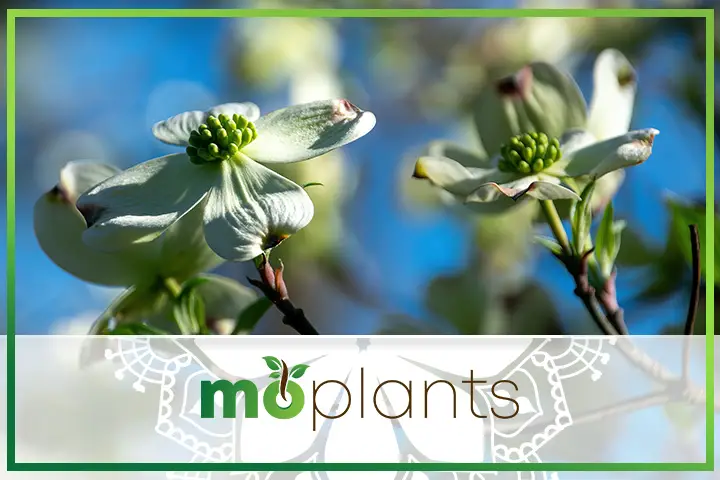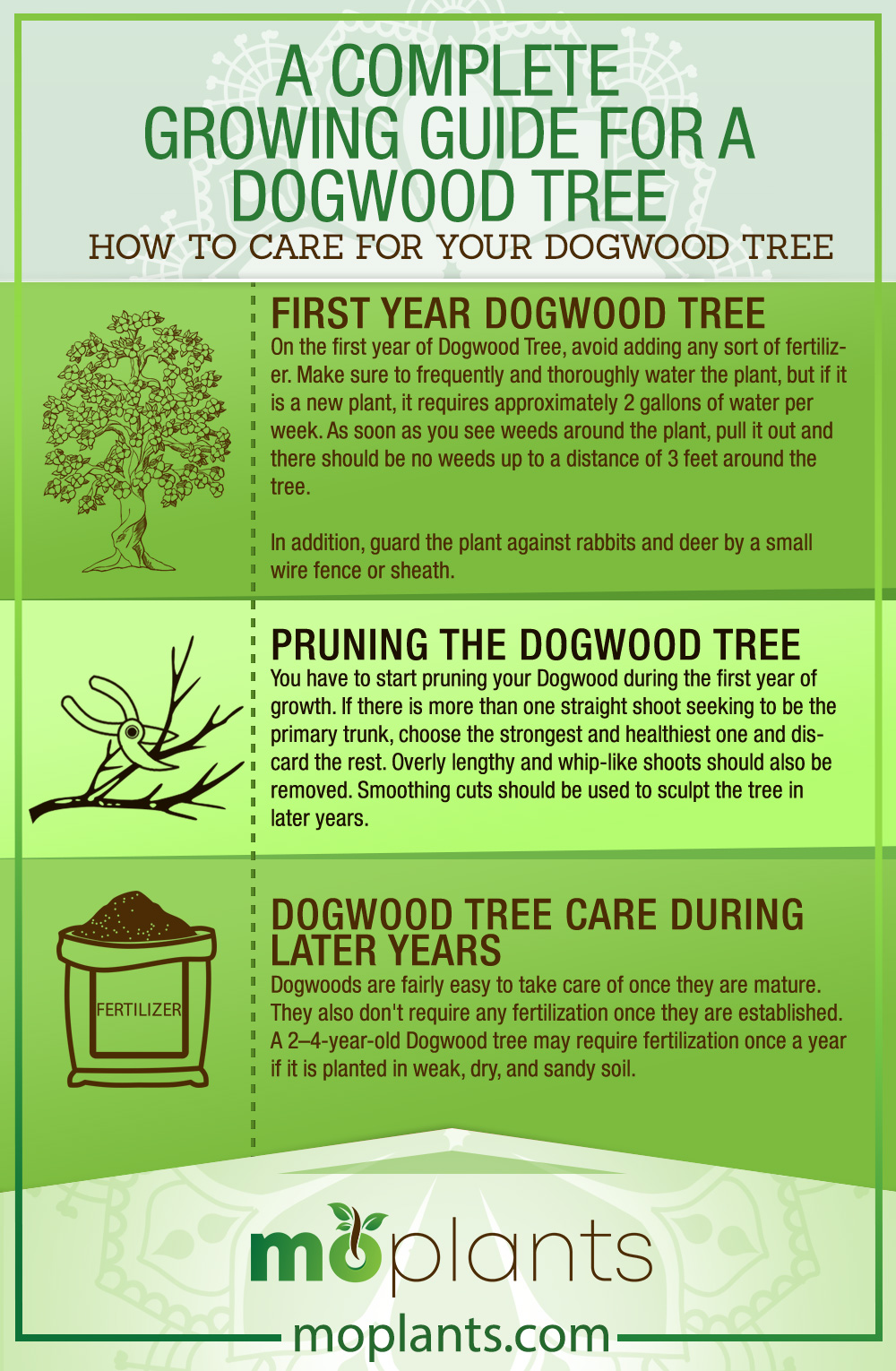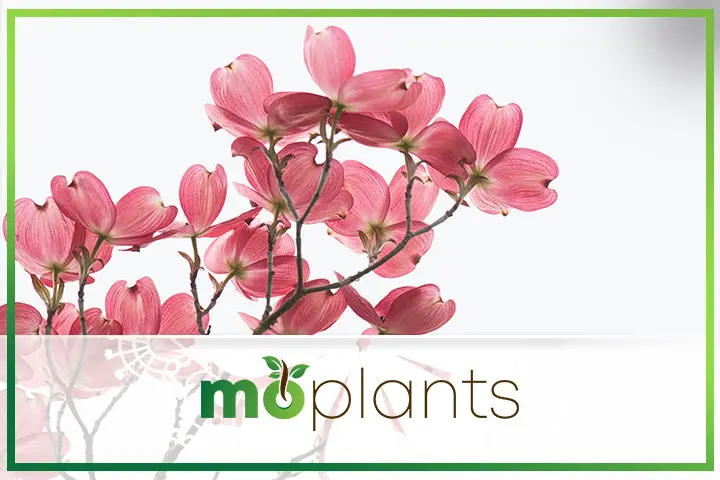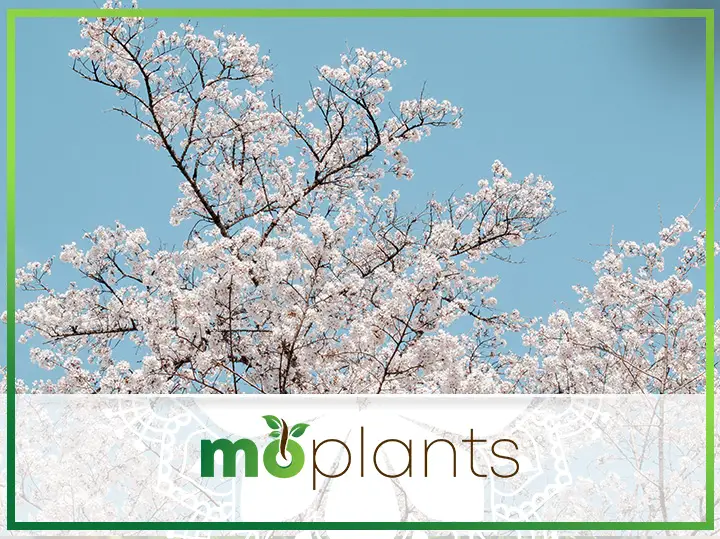If your garden or lawn seems like it is lacking something, then you should consider planting a Dogwood tree. A Dogwood tree is a decorative tree that blossoms with beautiful white and yellow flowers in the spring and pretty purplish leaves during autumn. It is naturally found throughout North America and belongs to the Cornus family. Although the Cornus family has over 50 different species, the Dogwood is the most popular due to its easy maintenance and beautiful appearance.
Distinctive Features of the Dogwood Tree
These trees are beautiful but are also very different from regular trees and have many distinctive features. The first thing that sets them apart is the bark, which resembles an alligator’s skin. As a Dogwood grows and matures, the grey bark splits and appears to be shattered into tiny strips, much like the skin of a crocodile or an alligator.
Another interesting thing about the Dogwood tree is that it changes color. The branches seem to appear in very different colors in various lighting conditions. In the shade, the branches appear to be a lime green color, whereas, in sunlight, they seem to be a bright crimson red.
Moreover, the flowers on a Dogwood tree aren’t actually flowers at all. The pretty vivid blooms are actually a sort of leaf called bracts that look like petals. These reddish, white, or pink leaves are encircled around a yellow core which is actually the flower cluster. These leaves protect the flower cluster and attract bees and butterflies for pollination.

If you want to enhance your garden or landscape, the Dogwood tree will make a unique addition that will add beauty all year round.
We have shared below a complete Dogwood tree growing guide so you can take your landscape up a notch and admire its natural beauty.
Dogwood Tree Growing Guide
Before we get to the plantation part of the tree, it is important to know about a Dogwood tree in its natural habitat. As Dogwood trees don’t grow very tall and are understory trees, which means they grow under the shade of taller trees and are protected and surrounded by them. Therefore, wherever you plan on planting your Dogwood tree, consider if the environment will let it thrive and grow.
For example, placing Dogwood trees in groups or on the outskirts of woodland regions might be better for their native environment. They can also be used to frame forsythia, lilacs, azaleas, or other spring bushes and shrubs.
While Dogwoods can be planted in direct sunlight, it is better to plant them in a little shade as it helps them grow better. Trees under direct sunlight tend to be stressed under the heat and become more vulnerable to pests. Moreover, blooming Dogwood trees under direct sunlight requires more water, particularly during summer.
Although Dogwoods can grow in various different climates and types of soils, they thrive in slightly acidic, organic, and humus-rich soil. It is important to note that the soil should be rich and thoroughly irrigated but not wet. Soggy and wet soil is deadly for Dogwood trees; however, they do require a little moisture. Mature Dogwoods have a high drought tolerance.
Test Your Soil
If you’re not sure about the soil drainage on the place where you intend to plant your Dogwood tree, test the soil drainage before planting in these easy steps:
- Dig a hole where you plan to plant your tree. It should be 12 inches deep and 12 inches wide.
- Fill water in the hole and wait for it to drain.
- Once it has drained, fill it up with water again and calculate the time it takes for the soil to drain this time.
- The ideal soil for a Dogwood tree should drain at a rate of approximately 1 inch per hour.
If the soil drains slower than this rate, taking action to improve the drainage is required. You could either plant the tree on an elevated bed or mound or plant a different tree that prefers swampy or wet conditions. Additionally, if the soil drains faster than this means it is too dry or sandy to plant a Dogwood tree. You can improve the dry soil by adding clay, topsoil, or any humus-rich organic material that will help in retaining moisture.
Let’s Get Planting
While spring is considered the best time of the year to plant Dogwood trees, containerized trees can still be planted at any season. The reason why spring is preferred is that the trees can get an entire season to develop and grow.
Let’s move on to the steps required to accurately plant a Dogwood tree.
Step 1
The first step after you have located the spot to plant your tree and checked your soil’s condition is to dig a hole. Make sure the hole you dig is at least thrice as deep and thrice as wide as your Dogwood tree’s root ball.
The bigger the hole, the better the growth.
Spread the natural organic soil that you dug out around the hole’s parameter. You don’t have to worry about smoothening the edges of the soil, as immature roots penetrate better on rough, uneven sides when compared to smoother edges. Do not add biofertilizers or soil conditioners to the soil.
Step 2
Once you have dug up the planting hole, proceed by creating a heap of soil in the middle of it. Place the crown of the root on top of the mound at the root sides across it. If the roots are long, it is better to trim them short rather than encircling them around the planting hole. Once finished, make sure the crown of the root sits above ground level.
Step 3
After the tree is planted, refill the hole using the same soil you removed from it while holding the tree in an upright position. Keep pressing on the soil as you refill the hole to make sure there are no air pockets. Once the hole is filled halfway, pour water on it to moisten it. Proceed to completely fill the hole with the soil. If you have planted the root ball at an alleviation, taper the soil in a slanting way from the ground level to the crown of the root ball. Do not add soil on top of the root ball as it will suffocate it. Finally, cover the soil and root ball with mulch. The mulch will help retain moisture, keep weeds away, and enhance the soil as it decomposes into organic fertilizer.
- Mulch Dos and Don’ts
For mulch, you can use anything from dried leaves to straws, pine needles, hay, grass clippings, or compost. However, mushroom compost should not be used as it raises the pH level of the soil due to the presence of lime in it. Fresh wood pellets or sawdust also should not be used as they absorb a lot of nitrogen, leaving less for your new plant, which will need the nitrogen for healthier and stronger growth. Additionally, mulch should not be layered right against the tree bark as it can cause it to rot.
Step 4
Thoroughly water the plant as well as its root ball. The water should be enough to completely reach the top of the root ball. At this stage, you can also incorporate a root stimulator solution which helps in the formation of baby roots and makes them stronger.
Infographic

How to Care for your Dogwood Tree
Planting is only the first step towards a long and hopefully fruitful journey for the tree. Anyone can plant a tree, but to make it grow and thrive, requires proper care, attention, and lots of patience.
First Year Dogwood Tree Care
- Avoid adding any sort of fertilizer to your Dogwood tree.
- Frequently and thoroughly water the plant.
- Pull out any weeds as soon as you see them.
- There should be no weeds up to a distance of 3 feet around the tree.
- For the first year, Dogwoods should receive over an inch of water from irrigation or rain; if there isn’t enough rainwater, the plant once every week to keep it hydrated.
- A new plant requires approximately 2 gallons of water per week. However, if the soil is drier and sandier, the plant may require at least 7-8 gallons each week.
- A small wire fence or sheath may be required to guard the plant against rabbits and Deer.
- The plant may also need support from stakes and cables for the first year or two if it is weak and droopy.
Pruning the Dogwood Tree
You have to start pruning your Dogwood during the first year of growth. If there is more than one straight shoot seeking to be the primary trunk, choose the strongest and healthiest one and discard the rest. Overly lengthy and whip-like shoots should also be removed. Smoothing cuts should be used to sculpt the tree in later years.
Dogwood Tree Care During Later Years
Dogwoods are fairly easy to take care of once they are mature. They also don’t require any fertilization once they are established. A 2–4-year-old Dogwood tree may require fertilization once a year if it is planted in weak, dry, and sandy soil.
Once your Dogwood is mature, you can also prune it as desired. You can get rid of crossed branches, dead wood, suckers, or excessively vigorous vertical shoots, known as water sprouts. It is best to prune Dogwoods during the summer by thinning the inside of the tree, allowing for airflow and sunlight to penetrate through.
Infographic

Prevention from Pests and Diseases
Another reason why Dogwood trees are so popular is that they don’t attract many pests. However, there is one that is of the worst kind, called the Dogwood borer. They are basically the larvae of a tiny moth that feeds and chews on the inner part of a Dogwood tree bark. Similar to how negative thoughts slowly eat you from the inside and only show up when it’s too late. These pests make their way through any incision or hole in the bark. Therefore, be extra careful while using lawn equipment like trimmers or lawn mowers near the tree. If your Dogwood tree is invaded by borers, get rid of the small white caterpillars and cut infested branches and twigs.
Dogwoods are also at risk of fungal infections called anthracnose. This fungus thrives in cold and wet conditions and spreads due to a lack of sunlight and circulation. The initial signs of the fungus are oozing stems and leaf patches, and it can be potentially fatal.
The Secret for Healthy Growth
Do you want to be let in on a horticulturist’s secret?
Experts and horticulturists frequently introduce a unique fungus to the soil that helps root growth via mycorrhizae. Mycorrhizae is a process in which the fungi form a relationship with the roots by colonizing them and, in turn, making them absorb more nutrients and water from the soil.
Dogwoods cultivated in the wild have natural access to these beneficial fungi; however, the soil in household gardens are usually lacking this fungus. If you add these fungi to your garden soil, it will significantly improve the growth and survival of the tree.
You can purchase mycorrhiza fungi from any gardening store or online, but an even better idea is to dig out some shallow soil from beneath a healthy Dogwood tree in the wild. This fungus is naturally found in the soil beneath healthy Dogwoods, and when incorporated into the soil under the Dogwood tree in your own garden and let it work its magic.

Wrap Up
Dogwood trees are blossoming beauties that put on a show-stopping display all year round. From the white leafy petals that sparkle during the spring season to the luscious green leaves in summertime followed by scarlet berries during fall to the patterned bark that stands out during the wintertime.
Considering how much beauty they add to a landscape, they are fairly easy to maintain and hardly ever require any fertilizer. A Dogwood tree in your garden would certainly make it stand out and act as the perfect ornament.
If you want to add more good-looking plants or trees to your garden, you can go through this comprehensive guide about growing the Jamaican Sorrel plant. If you want to learn more about different houseplants, our thorough guides are a wonderful resource. Head on to Mo Plants and get your hands on the best guides and tips for a healthy, blooming, and blossoming garden all year round.


